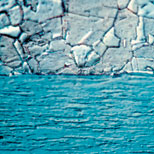Clad Metal (klad met’l) n.
Two or more metals or alloys joined by a roll-bonding and thermal treatment process that produces a bond at the atomic level.
Basic cladding has been around for centuries. It originally served as a way to bond decorative gold or silver surfaces onto base metals. Perhaps the most famous example of an early clad metal “product” is the Damascus sword – crafted from layers of steel and valued for its ability to take and keep an edge.
Today, the cladding process has been refined to the point where it’s become a highly sophisticated technology. We can clad virtually any combination of ductile metals and create a remarkably broad range of characteristics to fit an extensive and expanding range of applications.
Download our Metals that can be clad chart in .pdf format.
At EMS, we’ve bonded well over a thousand different combinations of metals and alloys, in all shapes and sizes, including some with fifteen different metal layers in a single strip. The bonding technique we’ve developed is so effective, there’s no need for intermediate brazing alloys or adhesives. That’s the genius of clad – it’s simple, it’s clean, and it’s permanent.
For centuries, cladding remained virtually unchanged until EMS revolutionized the process in the mid-1960s. Today, modern cladding machinery and highly sophisticated heat-treating, rolling, and finishing techniques produce materials that provide singular performance characteristics for hundreds of products – from tiny electrical contacts to truck bumpers, from cookware to engine oil coolers, from electronic components to automobile parts, plus residential and aircraft circuit breakers as well as appliance and industrial thermal controls.

